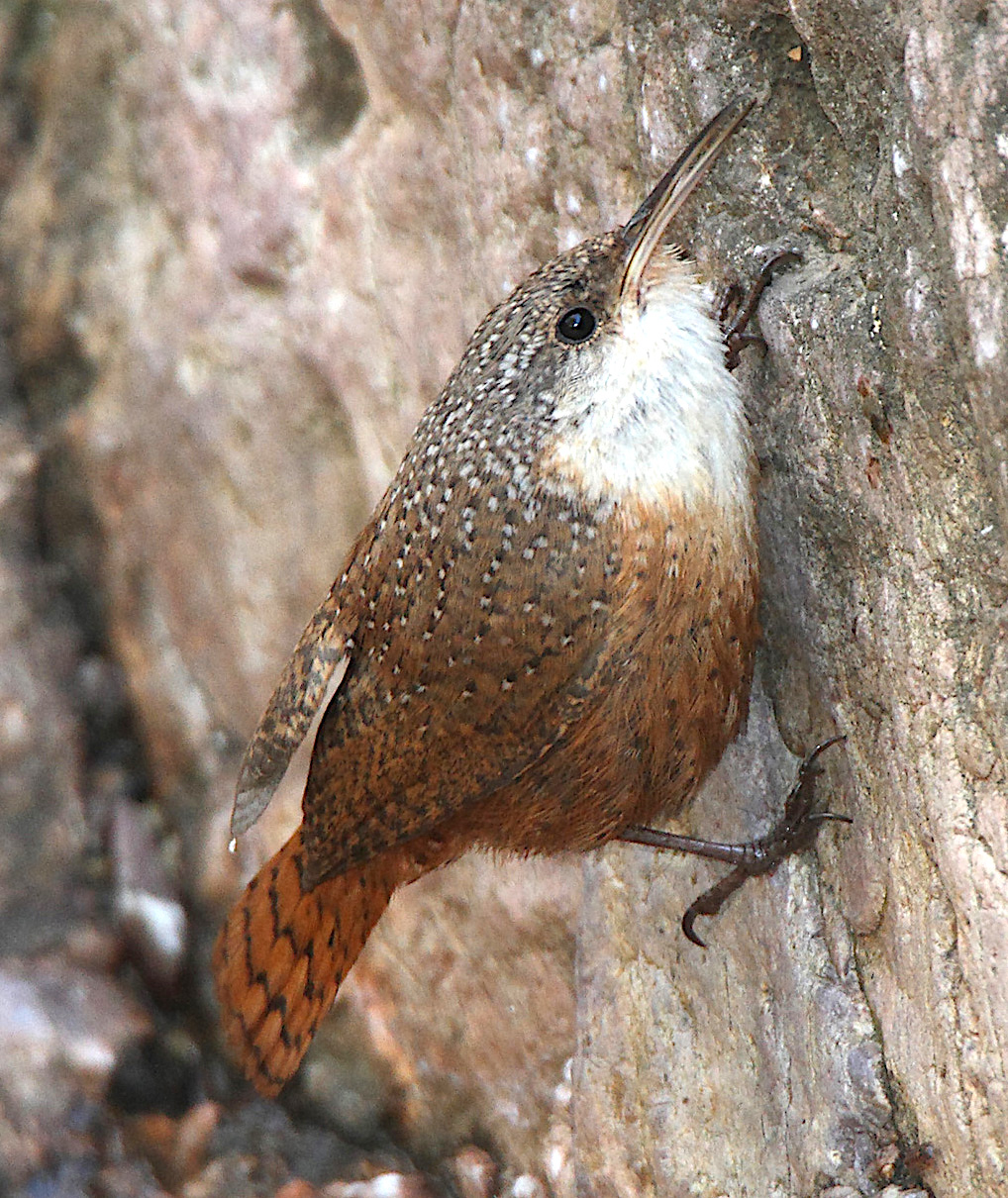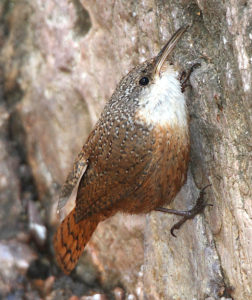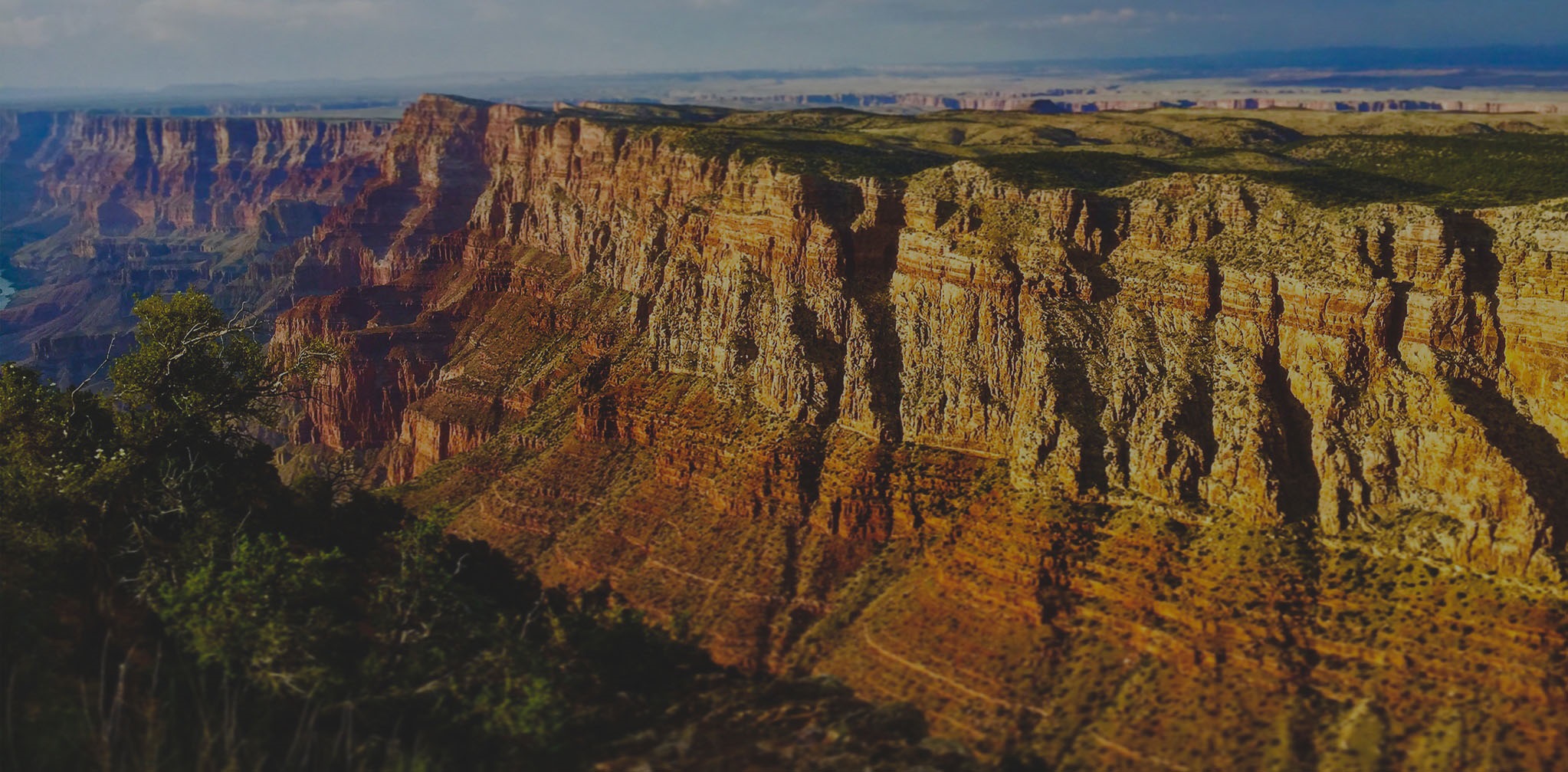
God’s Sweet Songster: The Canyon Wren
Rushing water permeates the canyon air with its soothing white noise. Gently the dark curtain of night slides aside and stars commence their gradual retreat. The first rays of the sun act like Midas, turning the highest rock turrets to brilliant gold. I’m captivated by a sweet, cascading song of the canyon wren. One hearing and I hold my breath waiting for it to repeat its mellifluous trill. Indeed, one of its six sub-species (Catherpes mexicanus meliphonus, found only in northern Mexico) bears the name meliphonus, identifying its sound as sweet as honey.
Naturalist Ralph Hoffmann wrote that the canyon wren “pours out a cascade of sweet liquid notes like the spray of a waterfall in sunshine” (Birds of the Pacific States, Houghton Mifflin, 1927). The song begins with notes of a staccato nature (tee-tee-tee-tee). Then double notes (tew-tew-tew-tew) compose a slow, descending pitch. The song ends with a few raspy sounds. The song embodies the wildness of its home terrain and sticks with those blessed enough to hear its notes.
 The canyon wren’s coloring includes a dark rusty back and light rusty tail with black hatches. Its throat is white and its head crowned with gray. It measures about six inches in length and feeds on insects and spiders in the rock crevices within the canyons and boulder fields. The canyon wren’s territory ranges throughout the North American West from southern British Columbia to the southern tip of Mexico. It usually makes its nest in rock crevices or among rock piles. When intruders come its direction, it bounces around from side to side before resuming to probe for food in the rock crevices.
The canyon wren’s coloring includes a dark rusty back and light rusty tail with black hatches. Its throat is white and its head crowned with gray. It measures about six inches in length and feeds on insects and spiders in the rock crevices within the canyons and boulder fields. The canyon wren’s territory ranges throughout the North American West from southern British Columbia to the southern tip of Mexico. It usually makes its nest in rock crevices or among rock piles. When intruders come its direction, it bounces around from side to side before resuming to probe for food in the rock crevices.
Its white eggs (normally four to six in number) have light reddish-brown dots. For twelve to eighteen days, the mother sits on the eggs in a nest both parents have built. When the offspring have hatched, both parents participate in feeding them during the two weeks or so they remain nestlings. The male uses his song to defend its nesting territory.
God created the canyon wren with a spine joining the skull higher than most other birds. Its skull is also flattened in such a fashion it gives the canyon wren the ability to thrust its bill into tight rock crevices without bumping its head. Its low center of gravity, the size of its feet, and sharp claws allow it wonderful maneuverability on vertical rock surfaces. The Creator also gave it the ability to collect all the water it needs from its prey—therefore, no one has observed it drinking water.
But ask the beasts, and they will teach you;
the birds of the heavens, and they will tell you; . . .
Who among all these does not know
that the hand of the Lord has done this? (Job 12:7, 9 ESV)
Dr. Bill Barrick
Canyon Ministries River Guide & Board Member




